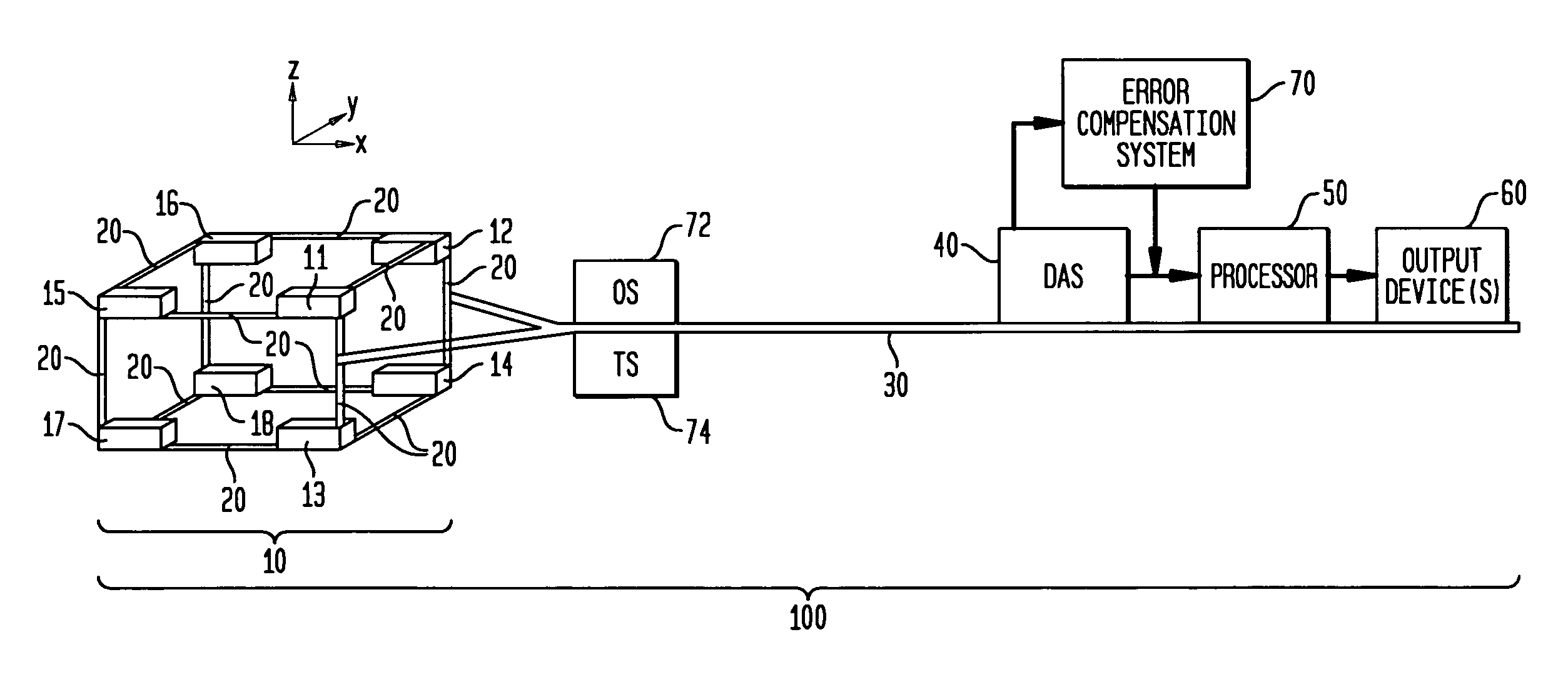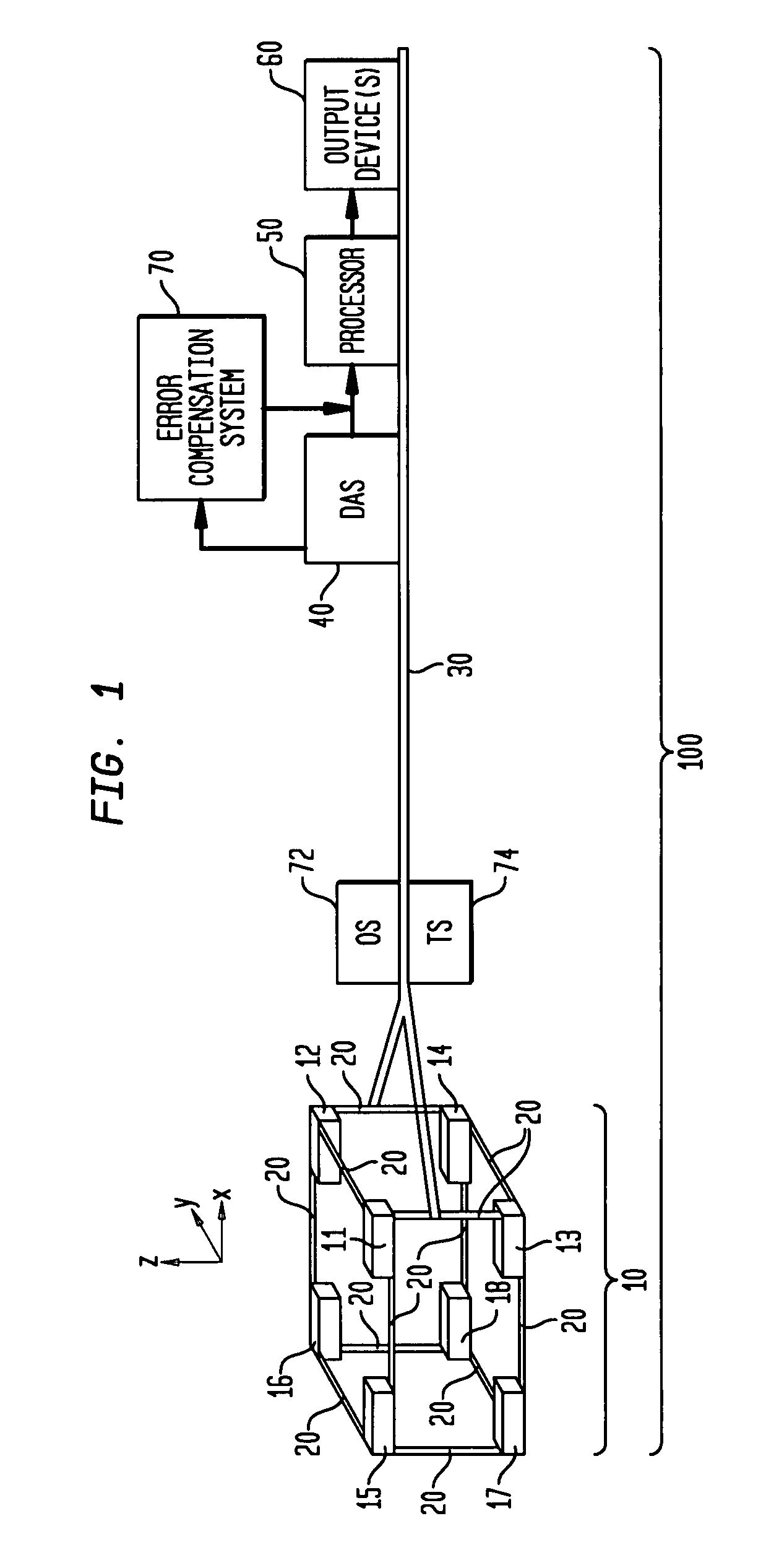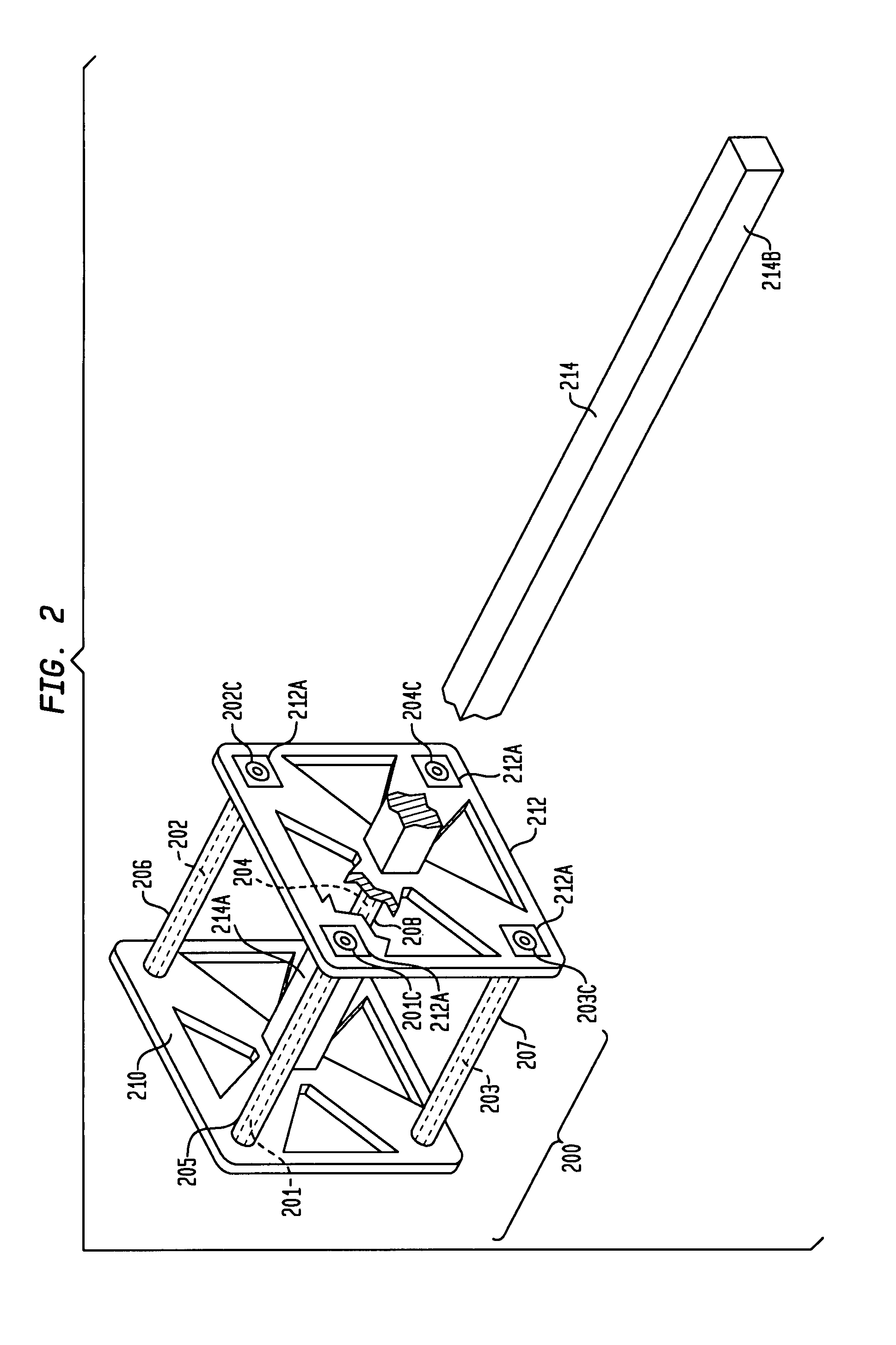Portable magnetic sensing system for real-time, point-by-point detection, localization and classification of magnetic objects
a magnetic sensing system and portable technology, applied in the field of magnetic sensing systems, can solve the problems of prior art technology not providing an easily portable magnetic sensing system that can provide effective real, inability to adequately address, and inability to provide effective real
- Summary
- Abstract
- Description
- Claims
- Application Information
AI Technical Summary
Benefits of technology
Problems solved by technology
Method used
Image
Examples
Embodiment Construction
[0021]Referring now to the drawings and more particularly to FIG. 1, a portable magnetic anomaly sensing system for real-time, point-by-point “Detection, Localization and Classification” (DLC) of magnetic targets in accordance with the present invention is shown and is referenced generally by numeral 100. The term “target” as used herein refers to any natural or man-made object residing on / under the ground or in the water, with the object having an inherent magnetic signature owing to the ferrous material(s) that are included in the object's physical structure.
[0022]At the heart of portable system 100 is a magnetic anomaly sensing system 10 that can passively measure magnetic gradient tensors associated with the magnetic signature of a target, and then convert the tensor data to gradient contraction scalars. The basic features of such magnetic anomaly sensing systems are disclosed in detail in U.S. Pat. Nos. 6,476,610 and 6,841,994, the entire contents of which are hereby incorporat...
PUM
 Login to View More
Login to View More Abstract
Description
Claims
Application Information
 Login to View More
Login to View More - R&D
- Intellectual Property
- Life Sciences
- Materials
- Tech Scout
- Unparalleled Data Quality
- Higher Quality Content
- 60% Fewer Hallucinations
Browse by: Latest US Patents, China's latest patents, Technical Efficacy Thesaurus, Application Domain, Technology Topic, Popular Technical Reports.
© 2025 PatSnap. All rights reserved.Legal|Privacy policy|Modern Slavery Act Transparency Statement|Sitemap|About US| Contact US: help@patsnap.com



